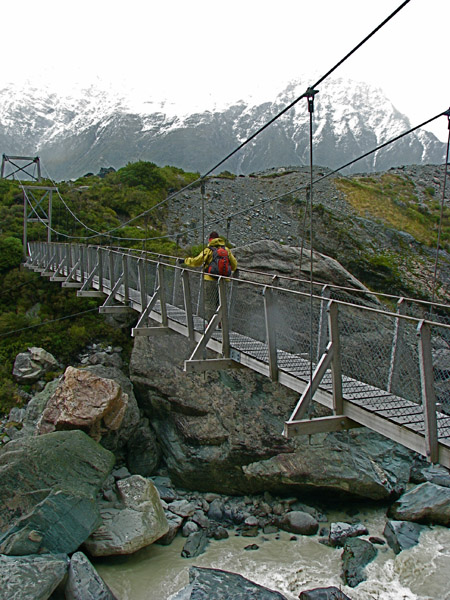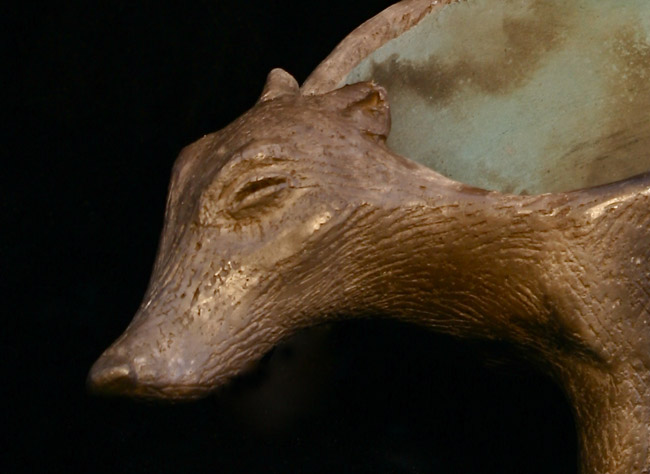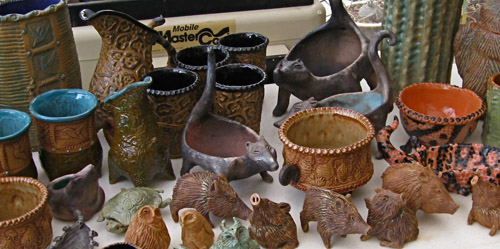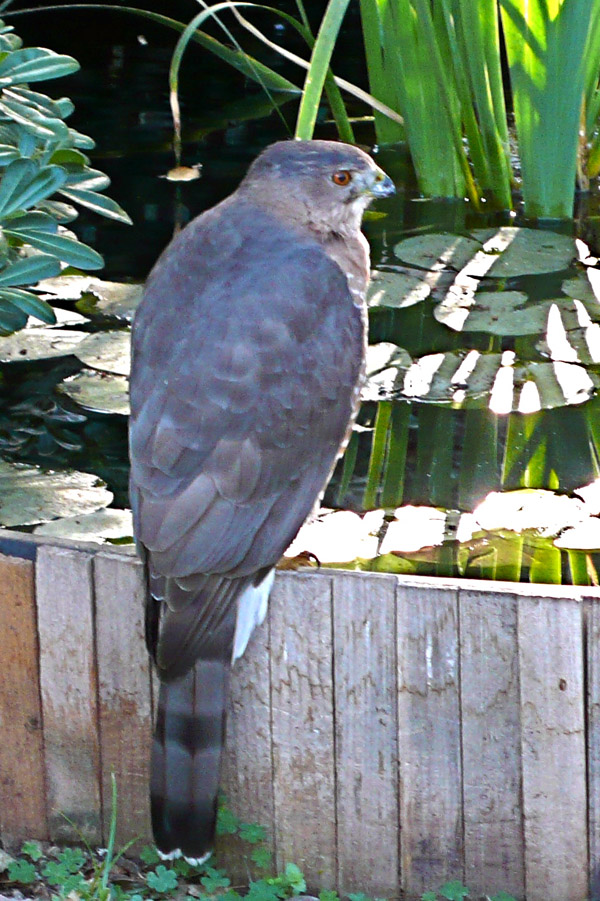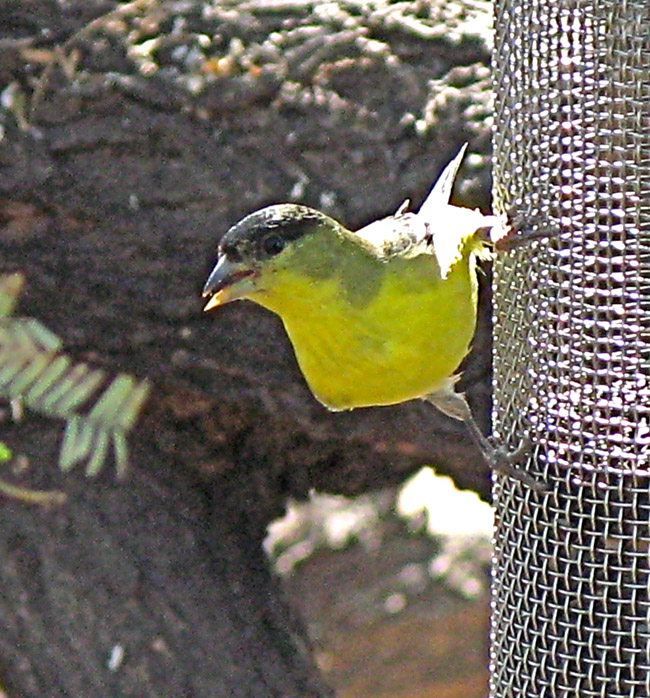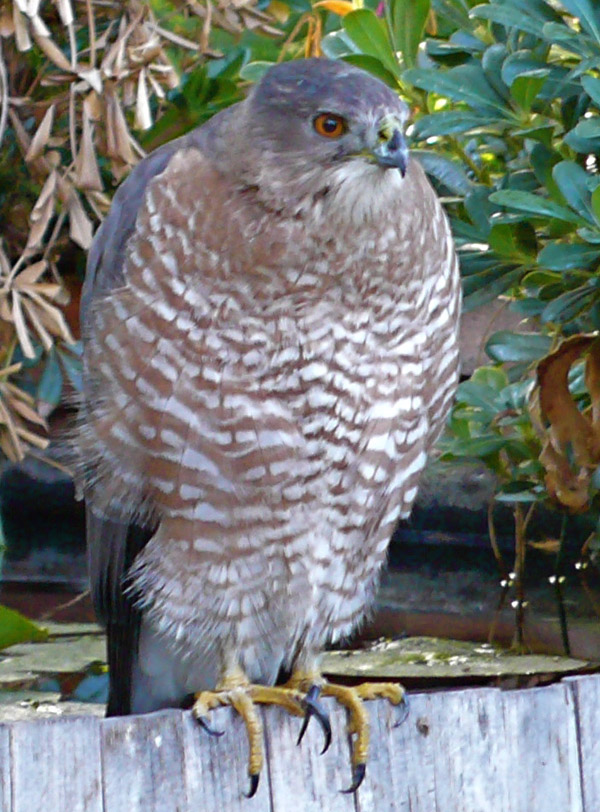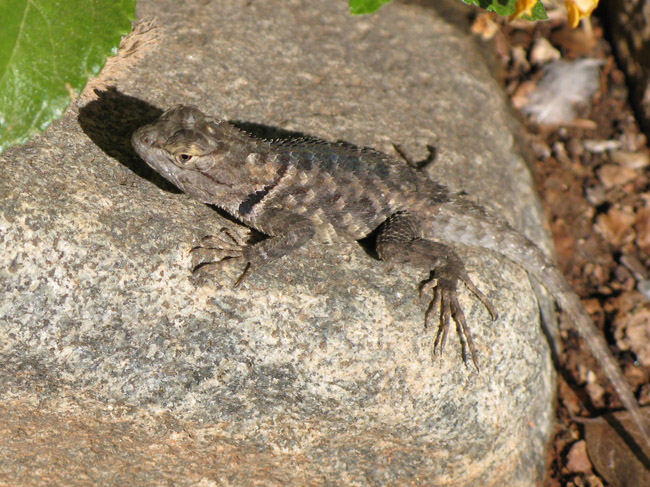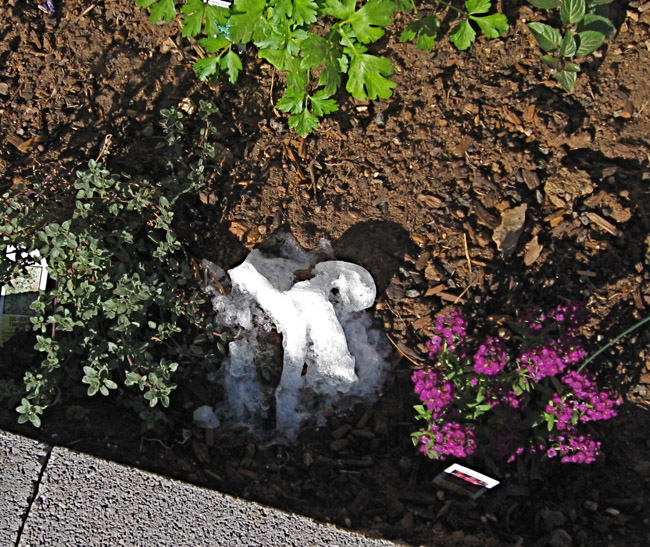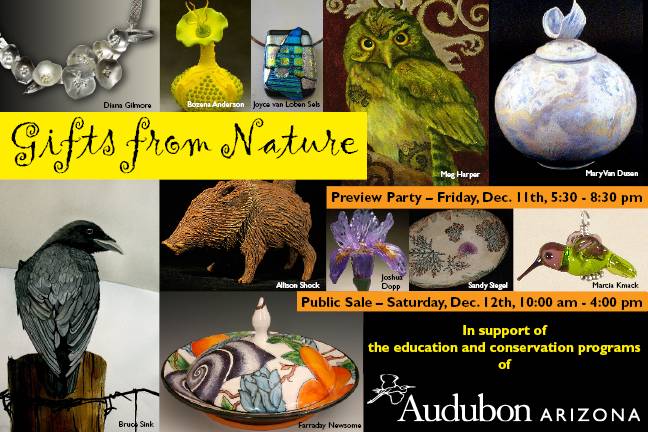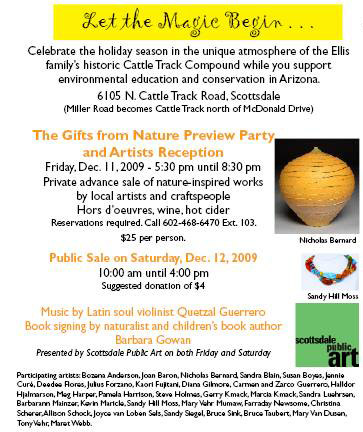…and a Phainopepla in a Palo Verde tree.
As around the turn of every new year, Christmas Bird Counts are happening across America. Under the auspices of the Audubon Society winter bird distribution and population information is compiled, 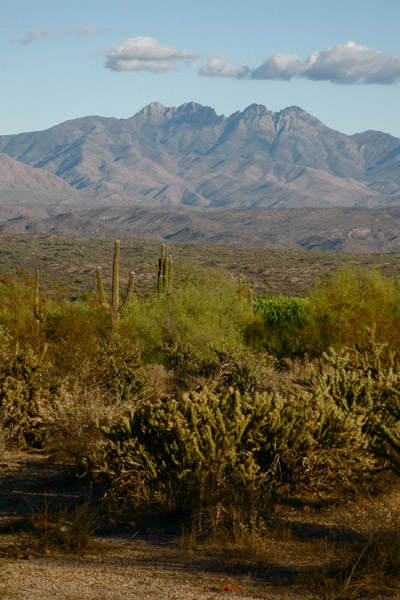 collected by volunteers, most of whom are not ornithologists but people with a non-professional — although sometimes intense — interest in birds. The vast quantity of info gathered in this time period is used “to assess the health of bird populations – and to help guide conservation action” in the U.S.
collected by volunteers, most of whom are not ornithologists but people with a non-professional — although sometimes intense — interest in birds. The vast quantity of info gathered in this time period is used “to assess the health of bird populations – and to help guide conservation action” in the U.S.
What do the volunteers gain from their long, often cold, hours in the field counting both species and individual birds seen? For some it’s competition, to best a personal record for birds seen in a given area, and of course, there’s the satisfaction of adding to what’s known about North American avifauna.
right: Four Peaks above the Verde Valley
For me, it’s getting out into in the winter landscape, among plants and animals which, sometimes, it’s been too long since I’ve seen. Of course, the birds are a big draw for me — but it’s not just birds. We regularly see other critters on our patch of territory: jackrabbits, coyotes and cottontails are common, but one year, we spotted a bobcat.
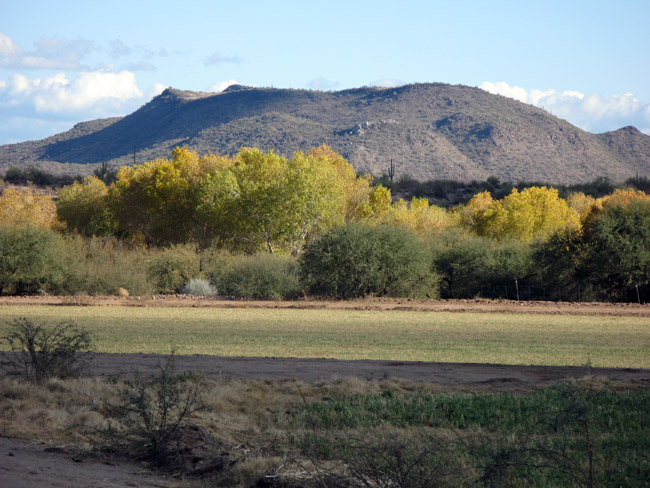
For the past three years, I’ve helped with the Salt and Verde Rivers CBC.
left: Yavapai Nation on the Verde River showing the bands of habitats we census.
Our particular area is in the Yavapai Nation along the Verde River east of the Phoenix metro area (special permission to bird the Indian Community is necessary), under the changeable faces of Four Peaks, at about 7600 feet, the highest peaks close to Phoenix.
The immediate censusing area is a mix of riverside riparian (cottonwoods, willows and invasive salt cedars), cattle-trampled mesquite bosques (mesquite and graythorn with little in between but sand and cowpies), desert upland (saguaros, creosote, cholla, palo verde and ironwood), and agricultural 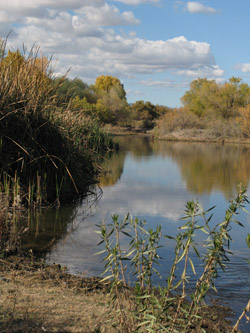 land: the tribe maintains many acres in pecan groves, citrus, and alfalfa. There’s also a patch of semi-rural residential area where tribe members and employees live. Such variable habitats make for a fairly diverse species assortment, ranging from invasive exotics, like Eurasian Collared Doves and starlings, to uncommon natives like Bald Eagles, which nest along the Verde River.
land: the tribe maintains many acres in pecan groves, citrus, and alfalfa. There’s also a patch of semi-rural residential area where tribe members and employees live. Such variable habitats make for a fairly diverse species assortment, ranging from invasive exotics, like Eurasian Collared Doves and starlings, to uncommon natives like Bald Eagles, which nest along the Verde River.
right: Rio Verde
This area distinguishes itself in a few ways: in numbers of sparrows, including white-crowned, savannah, lark, song, vesper (photo below), and lincoln’s, which glean brushy ditches cut through the fields, alongside verdin, bewick’s wrens, and lesser goldfinch. Other small birds like orange-crowned and yellow-rumped warblers, ruby-crowned kinglets and both expected species of gnatcatchers hang in the cottonwoods — this year we saw bushtits for the first time. 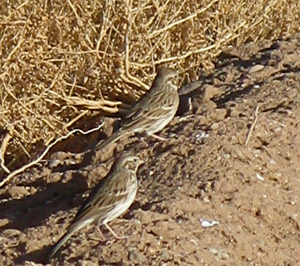 Red-winged black birds, meadowlarks, mourning doves, american pipits and house finches fill the fields and line the electrical wires along the road. The river hosts wintering waterfowl large and small: gadwall, mergansers, wigeon, mallards, bufflehead, canada geese, coots, and this year, even snow geese. Throw in five or six species of woodpeckers and other Sonoran upland species like thrashers, Abert’s towhees, cardinals, and quail — the area holds a record for most Phainopepla counted on a CBC — and you’ve got quite an assortment.
Red-winged black birds, meadowlarks, mourning doves, american pipits and house finches fill the fields and line the electrical wires along the road. The river hosts wintering waterfowl large and small: gadwall, mergansers, wigeon, mallards, bufflehead, canada geese, coots, and this year, even snow geese. Throw in five or six species of woodpeckers and other Sonoran upland species like thrashers, Abert’s towhees, cardinals, and quail — the area holds a record for most Phainopepla counted on a CBC — and you’ve got quite an assortment.
With such a smorgasbord of small birds — so very tasty! — there are plentiful predators like Peregrine falcons, Cooper’s hawks, Red tailed 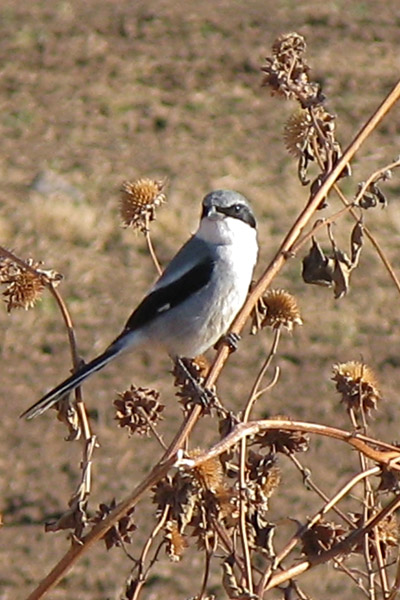 hawks, American kestrels, and harriers. One “functional raptor” we encountered was a Loggerhead shrike, working the brushy ditches for reptiles and insects, maybe even a sparrow to eat.
hawks, American kestrels, and harriers. One “functional raptor” we encountered was a Loggerhead shrike, working the brushy ditches for reptiles and insects, maybe even a sparrow to eat.
right: Loggerhead shrike
There’s even raptor-on-raptor pursuit: I saw a Peregrine dive at a kestrel. As the smaller falcon coursed over alfalfa fields searching for an unwary or slow pipit, the peregrine above took a shot at it out of the sun, its dive so steep and sharp that I could hear its feathers buzz like a bullroarer, the avian equivalent of a sonic boom. But before the strike, it pulled up short, giving the impression of having accomplished a dry run; the kestrel only dipped in the air evasively, and went on its way.
Experiencing the unpredictability of the natural world is what makes getting out to count enjoyable. And it doesn’t have to be far from the bustle of people and suburbia: sometimes, it’s all within a few miles of the intersection of a major highway, a casino, and the inevitable Denny’s.
(All photos taken by A.Shock during the 2009 Salt/Verde River Christmas Bird Count)

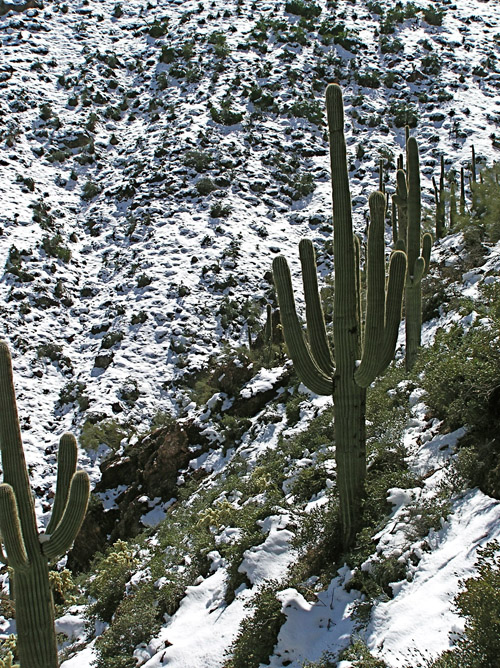
 Allison does not consider herself a wildlife artist,
but an observer who takes notes in clay.
Allison does not consider herself a wildlife artist,
but an observer who takes notes in clay.
